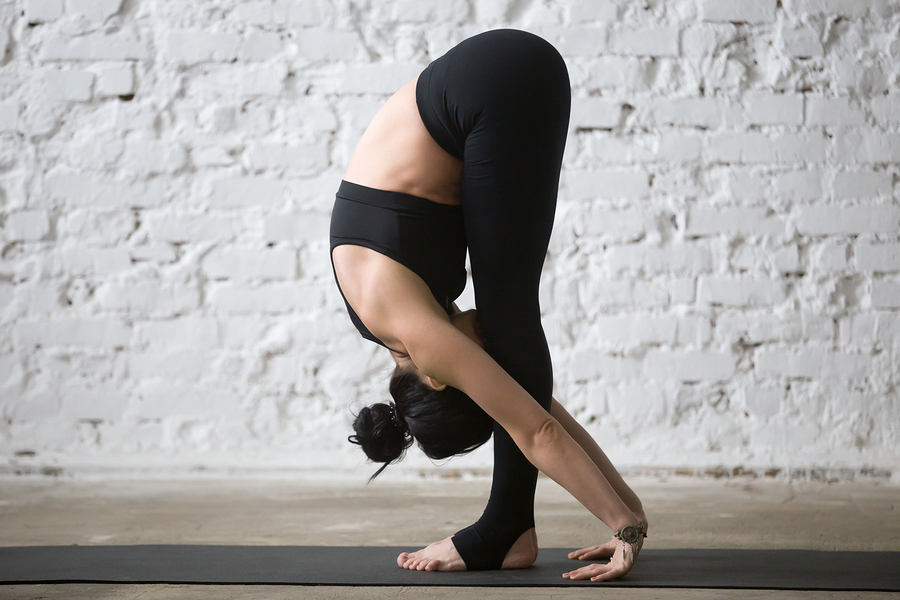Searching the internet, one can find many videos and detailed lists on how to correctly perform the Standing Forward Fold Yoga Pose or Uttanasana. Seeing how popular yoga has become, that should come as no surprise. According to the 2007 National Health Interview Survey, approximately six percent of American adults used yoga for health purposes. That makes it one of the top ten complementary and integrative health practices in the country.
Compared to other yoga poses, this pose seems simple, right?
But what if you don’t have the body type often observed in the online videos and pictures? What about the person who has chronic back pain, tight hamstrings, and neck pain? Which cues could a yoga instructor give that would make a difference in the lives of people seeking yoga for treatment as opposed to ongoing wellness?
What piece of somatic information could transform the Standing Forward Fold? What could change it from a pose to a movement that offers a different perspective? We want to experience yoga “off the mat” and bring the lasting benefits yoga has to offer in everyday life: getting the dishes out of the dishwasher, changing the garbage can liner, reaching for the hair dryer under the sink or picking up the toys from the floor.
Movement awareness improving function!
Here is the first somatic language cue of four to enrich the Standing Forward Fold Yoga Pose:
Standing Forward Fold Yoga Pose Cue 1: Toe Pads Disengage
There are four parts to a foot. First, there is a very LONG heel bone (Calcaneus) that ends just as the arch of the foot begins. Then we have the longitudinal arches of the foot Medial, Lateral/mid tarsal joints. Next, the ball of the foot (Metatarsal joints, Transverse Arch) And finally, the length of toes (Phalanges). People who suffer from chronic back and neck pain will rest most of their body weight on the front half of the foot and toes, often curling their toes into the floor when standing or bending over.
Cueing Toe Pads Disengage results in a subtle or—for most people—a profound lifting of the toes from the ground (notice I said toes, NOT the ball of the foot) and the weight of the body will shift towards the foot arch and along the LENGTH of the heel. This single move alone has the capacity to improve standing tolerance, one legged balance, and back and neck pain. A simple awareness check and reminder throughout the day releases unconsciousness and accumulative muscular tension along the spine. One can sense an important motor pattern or muscles activating that has been chronically inhibited during toe pad engagement. You can feel knee caps lifting (quadriceps muscle), pubic bone lifting (rectus abdomius and upper hamstrings muscles). You can feel the lengthening of the low back and neck in curves (lordosis), and the crown of the head lifting toward the ceiling (deep neck flexor muscles).
For a more in-depth look at this somatic language cue for the standing forward fold yoga pose, take a peek at my video below:
Get in touch today!

